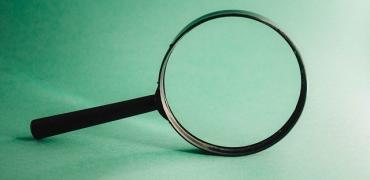PBT and vPvB substances can accumulate in the environment and especially in organisms. The consequences of this are unpredictable and irreversible in the long term. This can also cause long-term exposure to these types of substances in remote areas such as the marine environment. Authorities can ban these substances or impose strict conditions on production, trade and use.
European Legislation
Annex XIII of the REACH Regulation (EC) 1907/2006 lays down the criteria for classification as PBT/vPvB. In principle, all substances must receive a PBT/vPvB assessment at more than 10 tonnes of production or import per year. Substances identified as PBT/vPvB under REACH are placed on the Candidate List of Substances of Very High Concern for authorisation.
As of 20 April 2023, the amended CLP Regulation (EG)1272/2008 which establishes the hazard classification, labelling and packaging (CLP) of substances in the European Union. New hazard classifications have been added to this regulation, namely for PBT/vPvB, endocrine disruptors and PMT/vPvM. There is a transition period: for substances that are new to the European market, companies must comply with the amended CLP Regulation (EC) 1272/2008 from 1 May 2025. For substances that are already on the European market, companies must comply with the requirements of the amended CLP regulation as of 1 November 2026. Until these dates, the inclusion of the new hazard classifications is voluntary. More information on the amended CLP Regulation can be found on the website of the European Chemicals Agency (ECHA)
The POP Regulation (EU) 2019/1021(see under International conventions) with the agreed conditions, such as prohibition or restriction of production, trade and use.
Regulations on specific product groups such as biocide,plant protection products, pharmaceuticals and veterinary medicines also include a PBT/vPvB assessment.
International treaties
Similar assessments with similar criteria are also carried out in other international platforms, such as:
- United Nations Environment Programme (UNEP). This is stipulated in the Stockholm Convention and has its own system to identify these types of substances, referred to as Persistent Organic Pollutants (POP). The criteria for this are set out in Annex D..
- the POP protocol United Nations Economic Commission for Europe (UNECE)
- the OSPAR Convention(. Also OSPAR has its own criteria to identify PBT substances.
Read more about the The Stockholm Treaty (Dutch).
Read more about the OSPAR list of Substances of Possible Concern.
Measures
If a substance is labelled as PBT/vPvB under the REACH Regulation, companies must take adequate measures. In addition, European governments can ban substances, or place them under a strict authorization regime, or impose restrictions on the use of a substance. These processes are carried out by the European Chemicals Agency (ECHA). Read more about REACH autorisation and restriction.
Process of PBT assessment
The REACH criteria are explained in the "Guidance on information requirements and chemical safety assessment, Chapter R.11". It explains in detail how the various data should be interacted in order to arrive at a conclusion for the endpoints P, B and T.
Screening
Often, not all the data for that assessment are available. For that reason, criteria have been established, which allow for an initial assessment. If a substance does not meet these screening criteria, it is very likely that the substance is not PBT or vPvB.
Information that cannot be directly compared with the criteria
Within REACH, there is an obligation to include all available information in a PBT/vPvB assessment. Not all information can be directly compared with the numerical criteria, but it may be that this kind of information shows that the substance poses a concern for PBT. An example of this is the perfluorinated compounds, which have been assessed as bioaccumulative in humans due to their long half-lives.
Further assessment
If the substance does meet the screening criteria, further testing may be required to verify whether the substance is truly PBT or vPvB.
The full PBT assessment consists of two steps:
1. identification of PBT substances
2. evaluation of the sources and main emission pathways to the environment.
In this way, the most appropriate and effective measures can be taken to reduce the emissions of PBT substances into the environment.
Screening tool
RIVM has developed a screening method to identify substances that may have PBT/vPvB properties as early as possible. The screening methode is based on a model that uses structure activity relatonships. The method scores substances between 0 (low PBT potential) and 1 (very high PBT potential) based on modelled data. If the PBT/vPvB tool shows a score of 0.33 or higher, this is a signal that this substance has possible PBT properties. The PBT & PMT-screening tool can be used be risk assessors, drinking water suppliers, industry and others for screening substances for possible PBT or PMT concern. Permit officers can use the score as a first indication and as a basis to start a conversation with the company or to ask RIVM for further assessment.
Currently, about 6000 substances have been screened usint the screening method. The results are available via the PBT & PMT screening tool where substances can be found using the CAS (Chemical Abstracts Service )-number. A brief explanation can be found in the model description of the PBT & PMT screeningstool.
Proclaimer
The results of the PBT & PMT screening tool provide a prediction of potential PBT or PMT properties. A low score does not necessarily mean that there is no PBT, PMT or other (eco)toxicological concern. Conversely, a high score does not necessarily mean that a PBT or PMT criteria are fulfilled. It is a trigger to further evaluate a substance. New knowledge or insights can lead to changes and updates of the tool. Changes to a new version will be published on this website.

